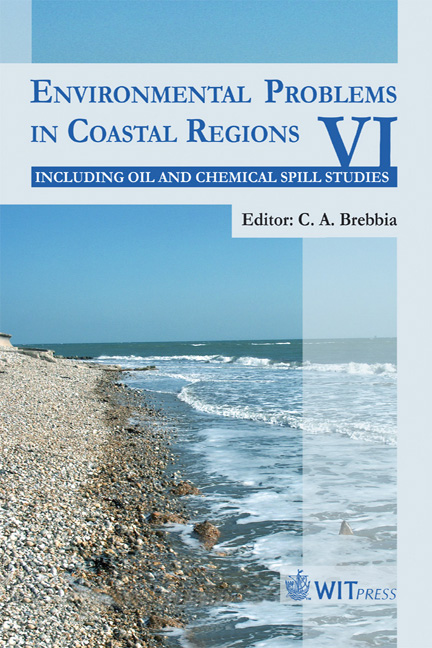Low-crested Offshore Breakwaters: A Functional Tool For Beach Management
Price
Free (open access)
Transaction
Volume
88
Pages
10
Published
2006
Size
5,868 kb
Paper DOI
10.2495/CENV060231
Copyright
WIT Press
Author(s)
K. Spyropoulos & E. Andrianis
Abstract
Beach best quality is one of the main targets for resort hotels located near to or by the sea. Offshore breakwaters are an alternative for coast protection against erosion and/or the creation of pocket beaches, particularly at locations where the tidal range is negligible or small. Such works can successfully function only under specific combinations of wave, longshore and cross shore current, bathymetry and quantity/quality of sediment. Hereunder the approach methodology for the design of low-crested offshore breakwaters for two hotels in Greece and Cyprus is described. Keywords: offshore breakwaters, beach management, erosion control, coastal protection. 1 Introduction Offshore or detached breakwaters are used extensively for coast protection or the creation of crescentic beaches with success particularly on coastlines where the tidal range is negligible or small. The presence of a system of offshore breakwaters influence the propagation of waves, causing partial wave breaking on the breakwaters’ offshore slope, but also allow wave propagation only through overtopping and diffraction between the gaps. This procedure results to wave energy reduction at the lee side of the breakwaters as well as local patterns of wave-induced currents. Consequently both alongshore and crossshore sediment transport is reduced leading to sediment deposition and accretion in the sheltered area between the structures and the shoreline. The target shoreline configuration is the formation of a salient (an advance of the water line behind the structure), or a tombolo (connection of the shoreline and the breakwaters).
Keywords
offshore breakwaters, beach management, erosion control, coastal protection.





